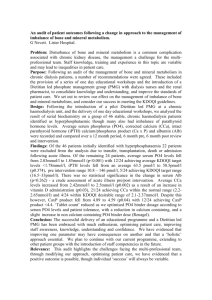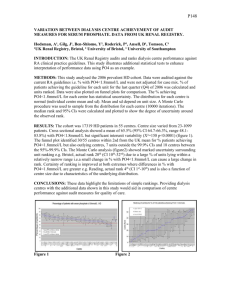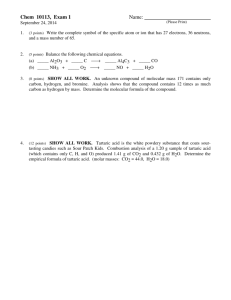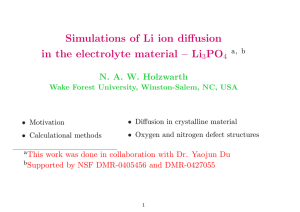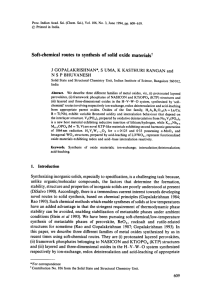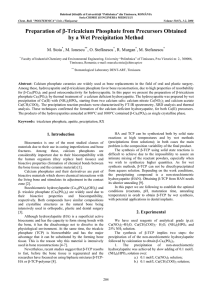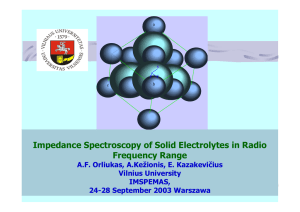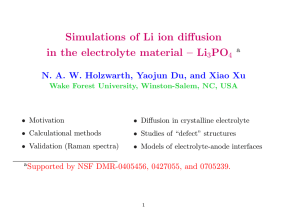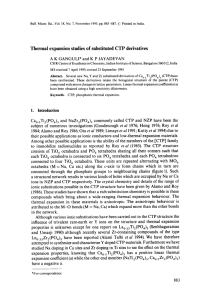New Low-Voltage Plateau of Na V (PO
advertisement
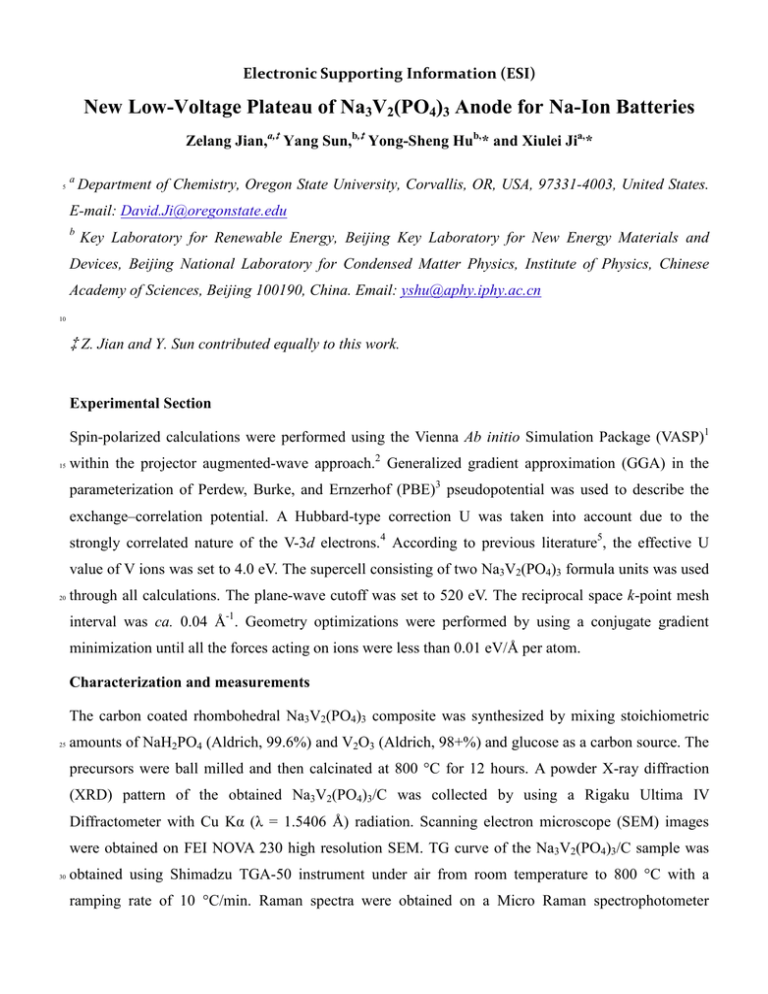
Electronic Supporting Information (ESI) New Low-Voltage Plateau of Na3V2(PO4)3 Anode for Na-Ion Batteries Zelang Jian,a,‡ Yang Sun,b,‡ Yong-Sheng Hub,* and Xiulei Jia,* a 5 Department of Chemistry, Oregon State University, Corvallis, OR, USA, 97331-4003, United States. E-mail: David.Ji@oregonstate.edu b Key Laboratory for Renewable Energy, Beijing Key Laboratory for New Energy Materials and Devices, Beijing National Laboratory for Condensed Matter Physics, Institute of Physics, Chinese Academy of Sciences, Beijing 100190, China. Email: yshu@aphy.iphy.ac.cn 10 ‡ Z. Jian and Y. Sun contributed equally to this work. Experimental Section Spin-polarized calculations were performed using the Vienna Ab initio Simulation Package (VASP)1 15 within the projector augmented-wave approach.2 Generalized gradient approximation (GGA) in the parameterization of Perdew, Burke, and Ernzerhof (PBE)3 pseudopotential was used to describe the exchange–correlation potential. A Hubbard-type correction U was taken into account due to the strongly correlated nature of the V-3d electrons.4 According to previous literature5, the effective U value of V ions was set to 4.0 eV. The supercell consisting of two Na3V2(PO4)3 formula units was used 20 through all calculations. The plane-wave cutoff was set to 520 eV. The reciprocal space k-point mesh interval was ca. 0.04 Å-1. Geometry optimizations were performed by using a conjugate gradient minimization until all the forces acting on ions were less than 0.01 eV/Å per atom. Characterization and measurements The carbon coated rhombohedral Na3V2(PO4)3 composite was synthesized by mixing stoichiometric 25 amounts of NaH2PO4 (Aldrich, 99.6%) and V2O3 (Aldrich, 98+%) and glucose as a carbon source. The precursors were ball milled and then calcinated at 800 °C for 12 hours. A powder X-ray diffraction (XRD) pattern of the obtained Na3V2(PO4)3/C was collected by using a Rigaku Ultima IV Diffractometer with Cu Kα (λ = 1.5406 Å) radiation. Scanning electron microscope (SEM) images were obtained on FEI NOVA 230 high resolution SEM. TG curve of the Na3V2(PO4)3/C sample was 30 obtained using Shimadzu TGA-50 instrument under air from room temperature to 800 °C with a ramping rate of 10 °C/min. Raman spectra were obtained on a Micro Raman spectrophotometer (Ventuno21, JASCO). The electrodes were prepared with Na3V2(PO4)3/C as active materials, carbon additives and poly(vinyl difluoride) at a weight ratio f 80: 10: 10. The slurry was cast on pure Al foil and dried at 100 °C in a vacuum for 10 h. The loading mass of obtained electrode is about 3 mg/cm2. The coin cells 5 CR2032 were assembled with pure sodium foil as the counter electrode, a glass fiber as separator, and 1 M NaPF6 EC: DMC (1:1) as the electrolyte in an argon filled glove box. The electrochemical measurements were performed on Hokudo Denko Charge/Discharge instruments at 25 oC. The Na storage tests for the Na3V2(PO4)3/C sample were performed at a voltage range of 0.01–3 V. Cyclic voltammetry (CV) was performed on a Solartron 1253B Frequency Response Analyzer. 10 15 Figure S1 The crystal structures of a. Na1V2(PO4)3 and b. Na3V2(PO4)3 20 25 2 Table S1. Crystallographic data of the Na3V2(PO4)3 at room temperature. Atom Type Wyck. X/a Y/b Z/c Occ. Na1 Na 6b 0.00000 0.00000 0.00000 0.8410 Na2 Na 18e 0.63380 0.00000 0.25000 0.7200 V V 12c 0.00000 0.00000 0.14573 1.0000 P P 18e 0.28760 0.00000 0.25000 1.0000 O1 O 36f 0.17650 -0.03760 0.19321 1.0000 O2 O 36f 0.19240 0.16950 0.09150 1.0000 5 10 Figure S2 Typical discharge/charge profile of hard carbon. 3 Figure S3 The devided parts for the typical discharge profile of the Na3V2(PO4)3/C sample at the range of 0.01-3V. 5 Figure S4 SEM image of the Na3V2(PO4)3/C sample Reference: 1 (a) G. Kresse and J. Furthmuller, Phys. Rev. B, 1996, 54, 11169; (b) G. Kresse and J. Furthmuller, Comp. Mater. Sci., 1996, 6, 15. 2 P. E. Blochl, Phys. Rev. B, 1994, 50, 17953. 3 J. P. Perdew, K. Burke and M. Ernzerhof, Phys. Rev. Lett., 1996, 77, 3865. 4 (a) A. I. Liechtenstein, V. I. Anisimov and J. Zaanen, Phys. Rev. B, 1995, 52, R5467; (b) O. Bengone, 15 M. Alouani, P. Blochl and J. Hugel, Phys. Rev. B, 2000, 62, 16392. 5 A. R. Armstrong, C. Lyness, P. M. Panchmatia, M. S. Islam and P. G. Bruce, Nature materials, 2011, 10, 223. 10 4


